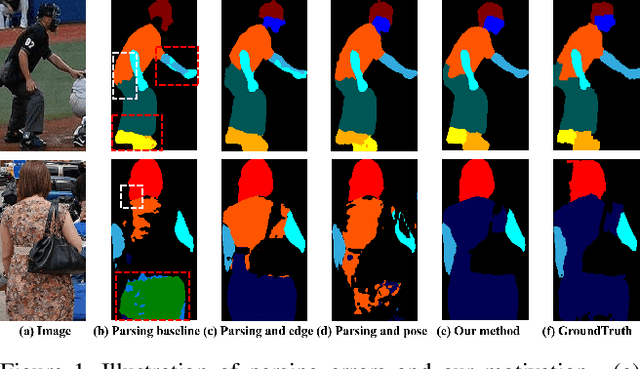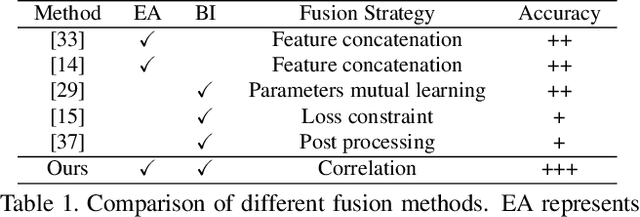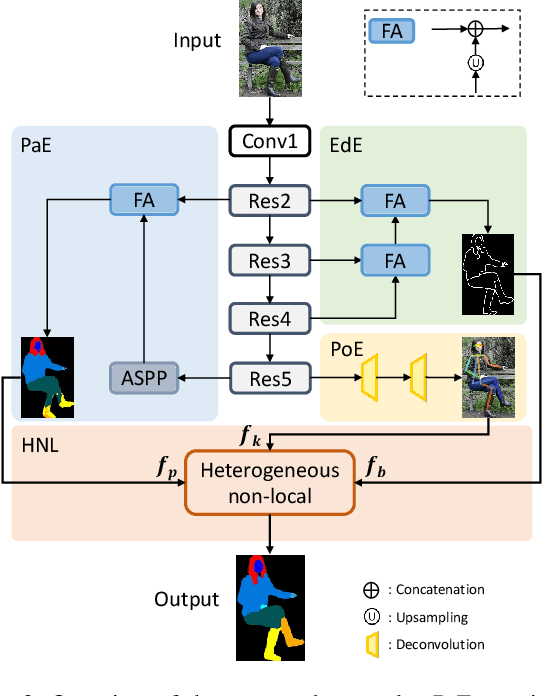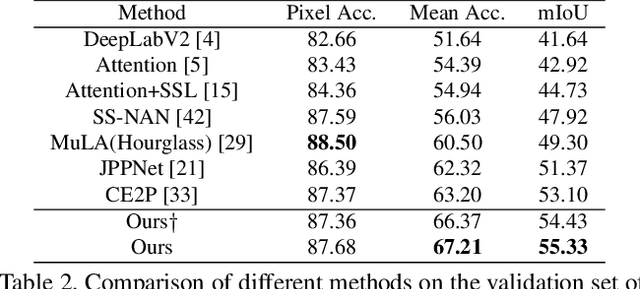Correlating Edge, Pose with Parsing
Paper and Code
May 04, 2020



According to existing studies, human body edge and pose are two beneficial factors to human parsing. The effectiveness of each of the high-level features (edge and pose) is confirmed through the concatenation of their features with the parsing features. Driven by the insights, this paper studies how human semantic boundaries and keypoint locations can jointly improve human parsing. Compared with the existing practice of feature concatenation, we find that uncovering the correlation among the three factors is a superior way of leveraging the pivotal contextual cues provided by edges and poses. To capture such correlations, we propose a Correlation Parsing Machine (CorrPM) employing a heterogeneous non-local block to discover the spatial affinity among feature maps from the edge, pose and parsing. The proposed CorrPM allows us to report new state-of-the-art accuracy on three human parsing datasets. Importantly, comparative studies confirm the advantages of feature correlation over the concatenation.
 Add to Chrome
Add to Chrome Add to Firefox
Add to Firefox Add to Edge
Add to Edge